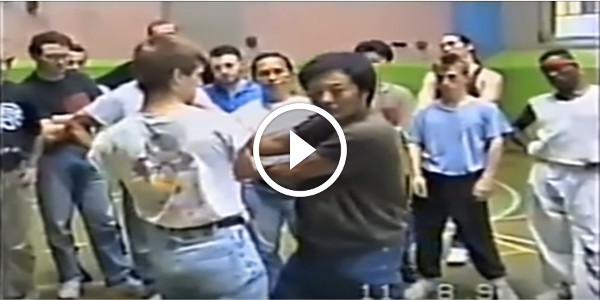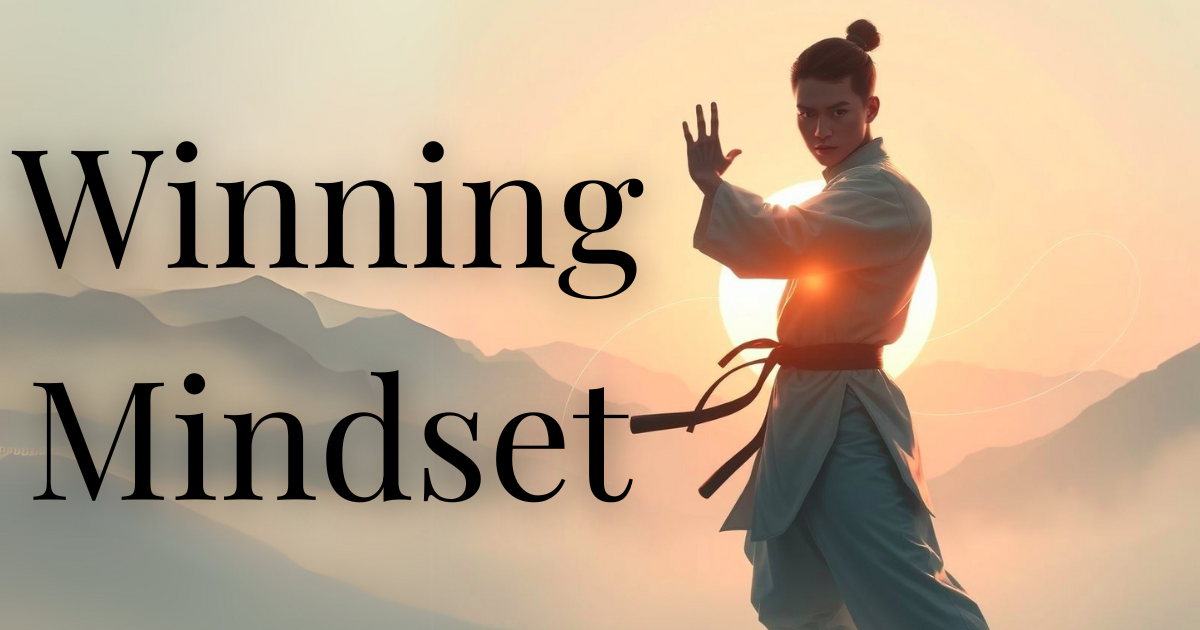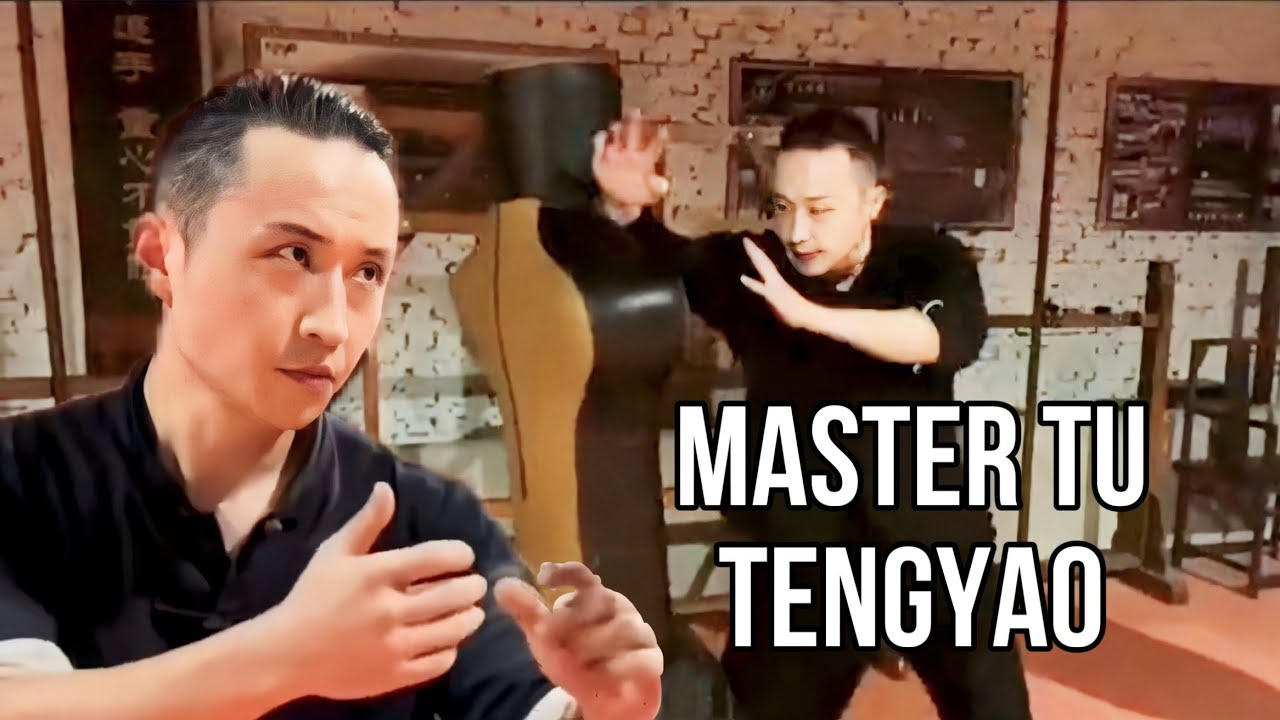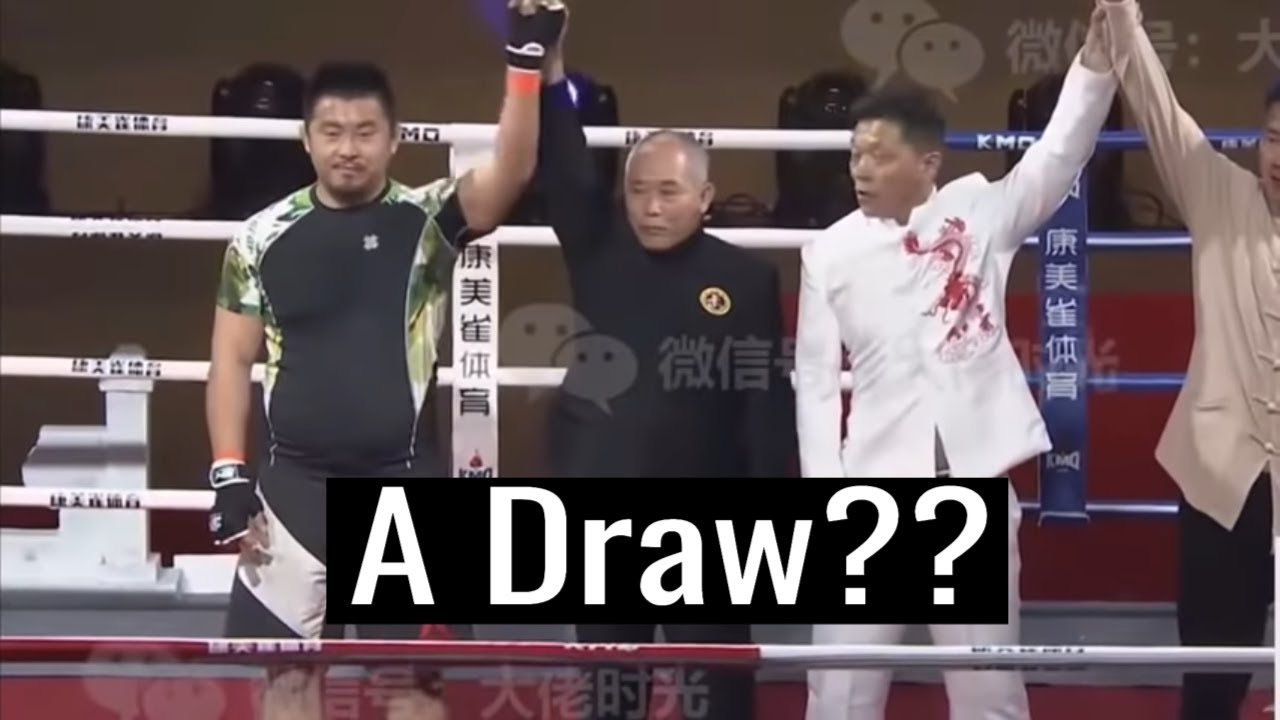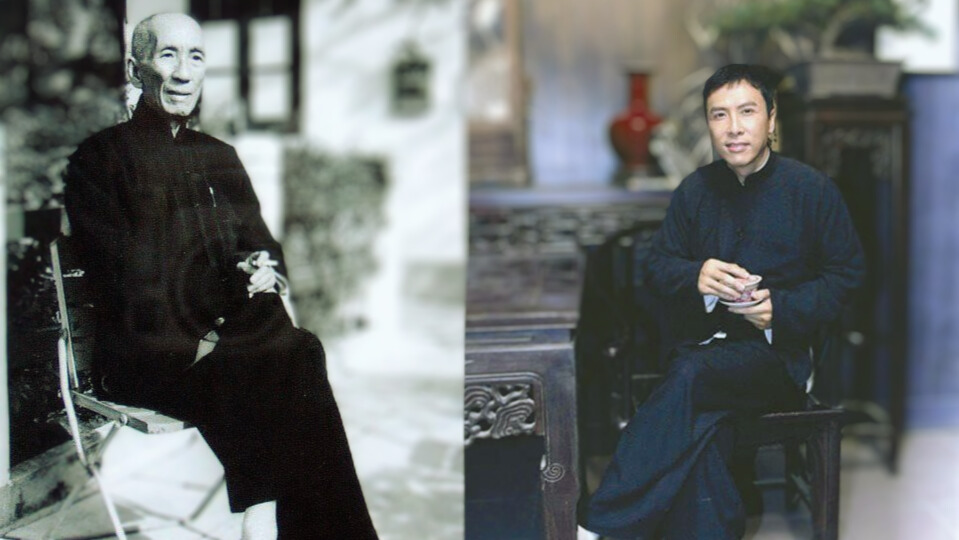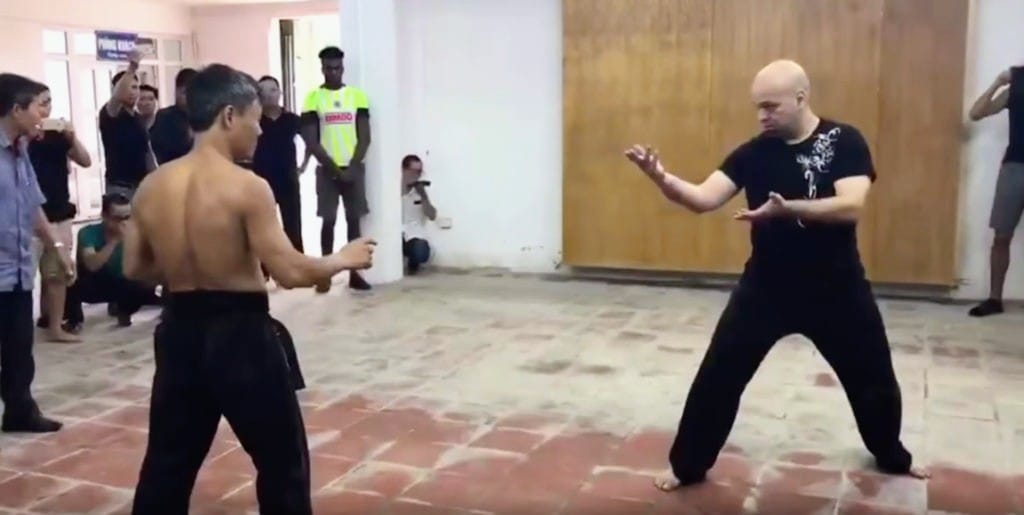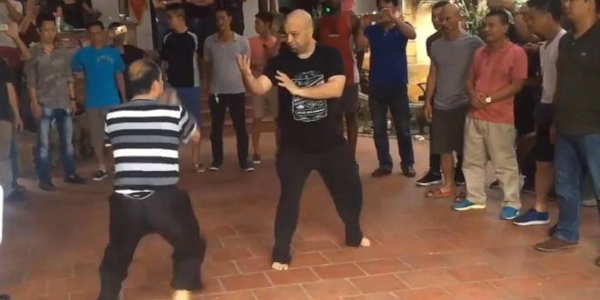Wing Chun Actually Works?!
Reading time: 11 minutes
Recently I released a video challenging Wing Chun, Aikido, Bujinkan, and Krav Maga practitioners to prove that their martial art works. I received more emails than I expected so I had to spend quite some time going through all of them. To my surprise, most of them were answers to my challenge from Wing Chun practitioners. And I must say - one of the videos really impressed me… But I’ll get back to that later in the video. Now, let’s start at the beginning.
So let's answer immediately the main question: Wing Chun actually works?
This video was published by Martial Arts Journey on their official YouTube channel. If you enjoyed this one, feel free to check out more of their amazing content.
The following article is the transcript of the video above.
Challenge Wing Chun Practitioners
First of all, what stood out for me, was that most of the email senders agreed with my arguments. Even if they sent me footage of Wing Chun being pressure tested or applied in sparring, they mostly agreed that the majority of Wing Chun schools lack the element of pressure testing and often enough make claims based only on anecdotal evidence - in other words - their personal opinion or someone’s story, instead of actual proof.
I will be honest though. When I made the video challenging Wing Chun practitioners, I did not expect to receive any videos at all, or at best - to receive
really bad ones, where the practitioner did cooperative practice with more intensity, but without any live resistance, while claiming that that’s enough of a proof of efficiency.
After all, that’s what happened when I made the same challenge to Aikido three years ago. Yet some of the videos I received from Wing Chun practitioners this time surprised me, or at the very least made me question my earlier established assumptions.
Wing Chun actually Works?
One of the most common examples I was sent was that of Qi La La. Qi La La is probably the most famous fighter in the World who represents Wing Chun in the ring. When taking a look at Qi La La’s fighting style - two different thoughts came to my mind. On one side of things, it would be difficult
to deny that it does look similar to kickboxing or Muay Thai. This brings up an argument that Matt Thornton, a famous martial arts skeptic makes: “There is no Canadian geometryâ€. In other words, geometry is geometry. What works - works. If a country would try to make up its own geometry and would tie it to its traditions - it would end up being similar to regular geometry, but would most likely feature aspects that are cultural, but ineffective. If the sole focus is functionality - it could be argued that any geometry will end up working the same way no matter which place it comes from.
Suggested: WING CHUN VS MMA | CHI LA LA VS KATSUAKI

This can also be said about martial arts. If you seek functionality and functionality only - it could be argued that striking will end up looking like striking, grappling like grappling, and so on. And that’s exactly what happens with martial arts that are primarily focused on functionality. Boxing, kickboxing, and Muay Thai have nearly identical striking mechanics. Only the elements which are based on specific rule sets or conditions vary, such as Muay Thai allowing the use of elbows.
When looking at Qi La La’s fighting matches, similar conclusions could be made. Many of the techniques he uses do have a great resemblance to the formerly mentioned martial arts. But at the same time, I think that this statement alone, without taking the other side of the coin into account, does not do justice. As similar as Qi La La’s style looks to kickboxing or Muay Thai in some regards, his fighting style also speaks of his Wing Chun
roots. His stance is narrow, his hands are focused on his center line, he focuses on parrying and he also seems to favor chaining his strikes together. It would be easy to say - “well Qi La La’s Wing Chun is simply kickboxing with some Wing Chun elementsâ€, but I feel that relying on this statement alone without any further investigations or considerations would be a cop-out. So I decided to dig deeper and investigate more about Qi La La.
Since Qi La La is based in China and does not appear to speak English, the best source I was able to reach in order to learn more
about him was Jerry of “Fight Commentary Breakdowns†who broke down a lot of Qi La La’s fights and is in direct contact with him. My first question to Jerry was if Qi La La practiced kickboxing or Muay Thai and if Wing Chun was only an addition to his fighting style.
Here’s how Jerry responded: “Qi La La has three styles represented. He's got Wong Shun Leung Wing Chun primarily. Besides that, he's also got Tongbei Kungfu from a Shifu named Lao Na. And then he's done a little bit of BJJ because it's a necessity when doing MMA fights. So he's as close to pure Kungfu as possible.â€
I find that to be rather impressive. If what Jerry is saying is true, Qi La La managed to reach a level where he can fight Muay Thai and MMA fighters on an equal level by primarily training Kung Fu, which proves that it can be functional. Qi La La also deserves great respect for taking his martial art practice out there, testing it, and constantly improving it through resistance and not only traditional drills.
Some could say though that maybe Qi La La is a unique phenomenon. That it’s something that only he can pull off. But that is where the other emails that I received come in.

Another practitioner that responded to my email was Marco Tancredi - an Applied Wing Chun practitioner since 2005. In the email, he told me that during his training he did a lot of sparring, focus mitts, and fighting drills. He also ended up competing. What’s unique about his story is that based on Marco he did spar a lot with Thai fighters and would occasionally ask them for some tips, but other than that he never trained anything else but Wing Chun. Looking at his fight videos I saw a lot of similarities to Qi La La’s style, which proved to me yet again that Wing Chun trained with a lot of sparring and pressure testing can become effective.
There was also - something else that stood out for me in Marcus’ email. At the beginning of his training, for him sparring and Wing Chun was synonymous, but when he started exploring other Wing Chun schools, he was shocked at how little sparring there was there, if any at all. To quote him:
“There was no conditioning, no pressure testing, no timing drills and for sure no sparring. Never did I get a straight answer as to why.â€.
Before starting this challenge, how Marcus described other schools he got exposed to, was my impression of Wing Chun. Lots of outdated techniques, dead drills, and cultural aspects, topped with “it’s too deadly for sparring claimsâ€. At the same time, I received a fair amount of Wing Chun sparring and pressure testing videos, enough to reassess my opinion. For a moment I wasn’t sure. Did Wing Chun evolve over the years and the majority of schools are pressure testing and sparring now, or am I only getting the cream of the crop which was starting to change my impression of this practice?
In order to find out, I went on to ask how common sparring in Wing Chun is on Reddit’s martial arts and Wing Chun communities.
First of all, It pointed out that many Wing Chun schools confuse a practice named Chi Sao for sparring. A quick look at it made it clear as to why. Many martial arts practitioners confuse pressure testing with intensity. The formerly mentioned practice definitely has a level of speed and intensity. I would even dare say that these two practitioners in this video example are showing impressive skills… But it is not fighting. There is a slight chance that one of these practiced motions would come up in actual fighting, but to begin with - there is no aim in either of the practitioners to reach and hit the other person. The practice is all done in mid-air and thus does not teach a person to deal with someone who is really aiming to hit you.
As it is said: you become good at what you train. If you train mid-air strikes and defense, that’s exactly what you will learn, unless you will add the elements of resistance and spontaneity later on.
Another element that shows that this practice is not sparring - is the ending moments when one of the practitioners takes the other one down or “finishes†him. It is confusing too, since it looks like one of them defeated the other, hinting at a level of competition and resistance. Yet when you take a closer look - when the practitioners for some reason decide that one of them won, the other one clearly stops and waits for the first practitioner to finish him off, while showing no signs of resistance at all.
Yet again, an element of complete surrendering under very specific conditions, where most fighting, in reality, would still continue, does not teach you fighting, unless that is trained additionally. Once again, this practice does look impressive for a regular viewer and may even seem convincing enough as sparring - but it is not. Unless there is active resistance, spontaneity and a true aim from both participants to get each other through the entire practice - these developed skills will not come up in sparring or fighting when the mentioned conditions will be included.
To quote Bruce Lee - you can’t learn to swim on dry land. And it seems that many Wing Chun schools confuse this practice for swimming, while really they are training on “dry landâ€.
Suggested: WHY DID IP MAN STOP TEACHING BRUCE LEE
As I continued to investigate the responses on Reddit about how common sparring is in Wing Chun, although there were no studies to rely on, the majority of r/wingchun and r/martialarts members agreed - only 5 to 20% (at best) Wing Chun schools do sparring or pressure testing. Yet again, to be honest, that is still more than I expected.

Seeing all these Wing Chun pressure testing videos I was impressed and discovered a newfound respect for each individual who took upon the mantle of pressure testing their martial art. At the same time, those were not the individuals that I was really challenging. In fact, these individuals were the ones who agreed with me and shared my desire to promote the importance of pressure testing, live drilling, and sparring. Meanwhile, the people who make claims without being able to prove them with evidence, are still on my radar, since saying that my practice is deadly while relying on no proof is no option.
But I have to admit, a part of me was wrong. It seems that Wing Chun can be pressure tested and used in sparring and this video made the greatest impression on me. The Wing Chun fighter here is clearly using his style and he is doing a pretty good job against an apparent boxer.
Does that prove that Wing Chun is superior to boxing, Kickboxing, or Muay Thai? Not at all. That is still a question to be explored, tested, and answered.
Do many Wing Chung schools confuse sparring and training on “dry land†so to speak, believing that they would defeat everyone without evidence? I would dare say yes. But one thing can be said for certain - there is more to Wing Chun than I expected.
Thank you. Your comment will be approved shortly.
Comments
Thank you. Your comment will be approved shortly.
Thank you. Your comment will be approved shortly.
Thank you. Your comment will be approved shortly.
Thank you. Your comment will be approved shortly.
Thank you. Your comment will be approved shortly.




